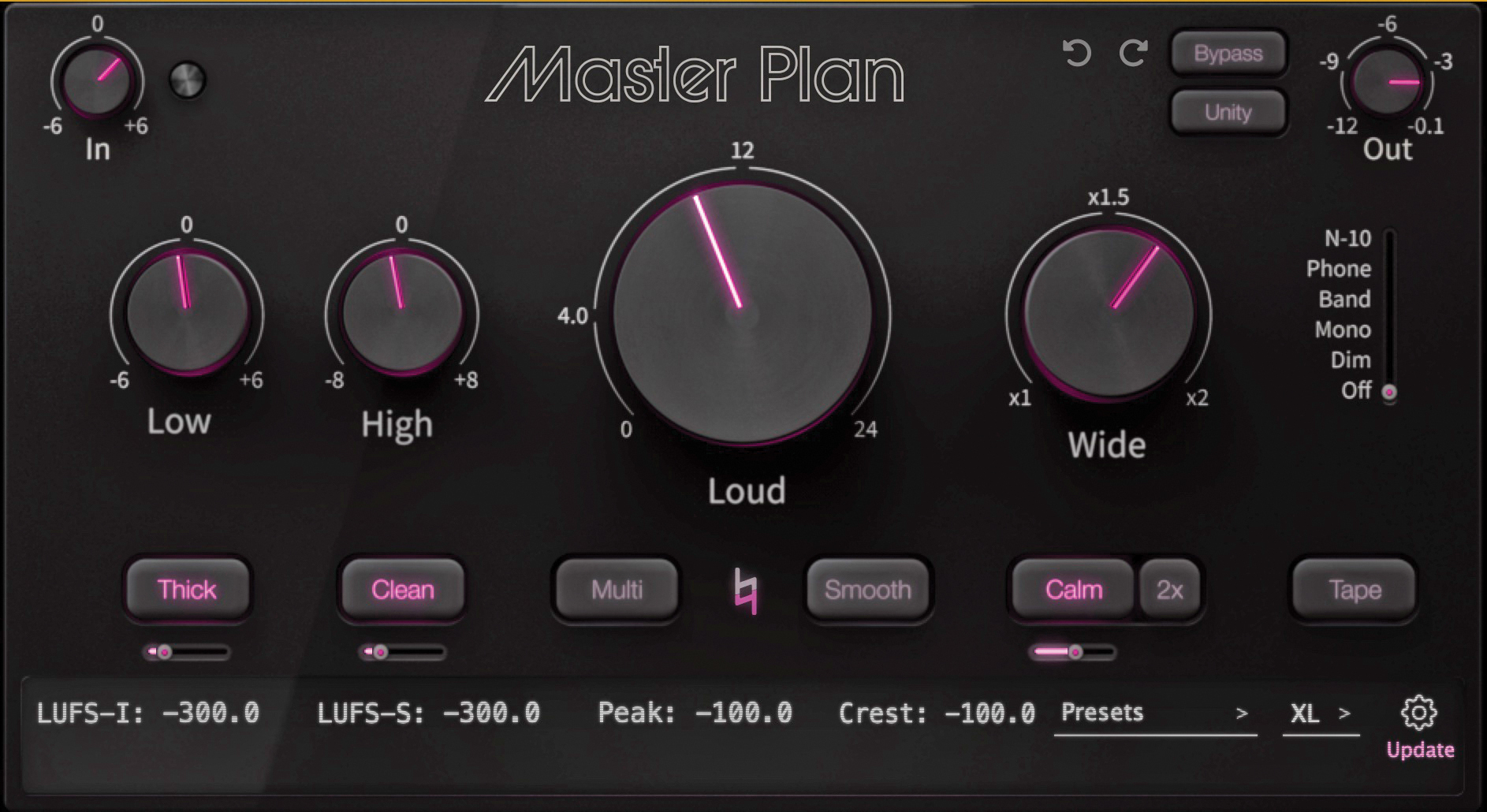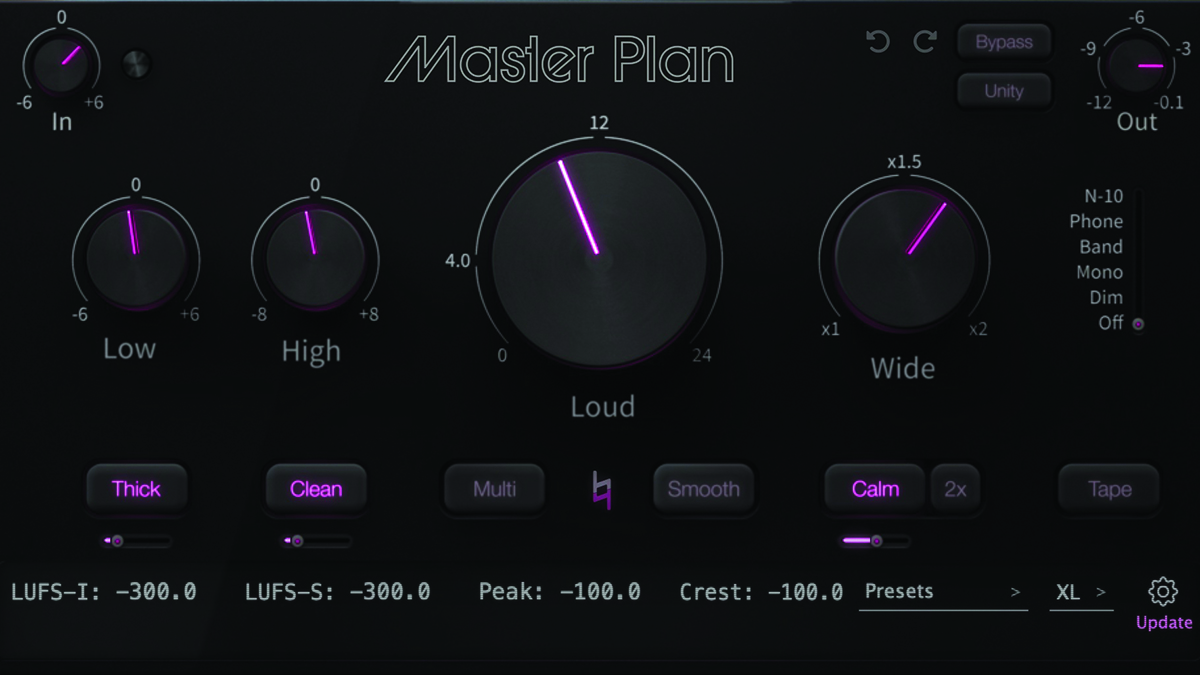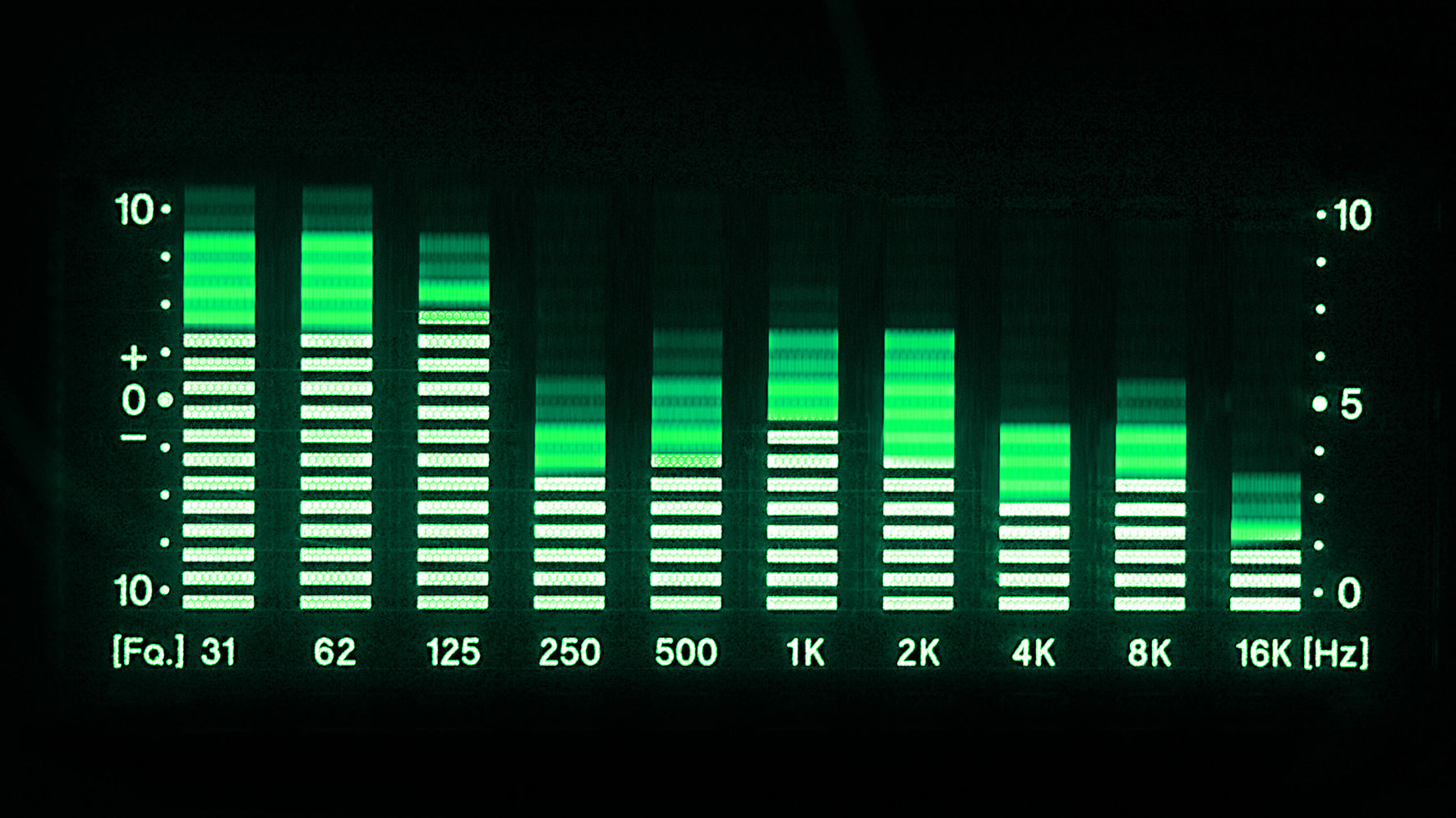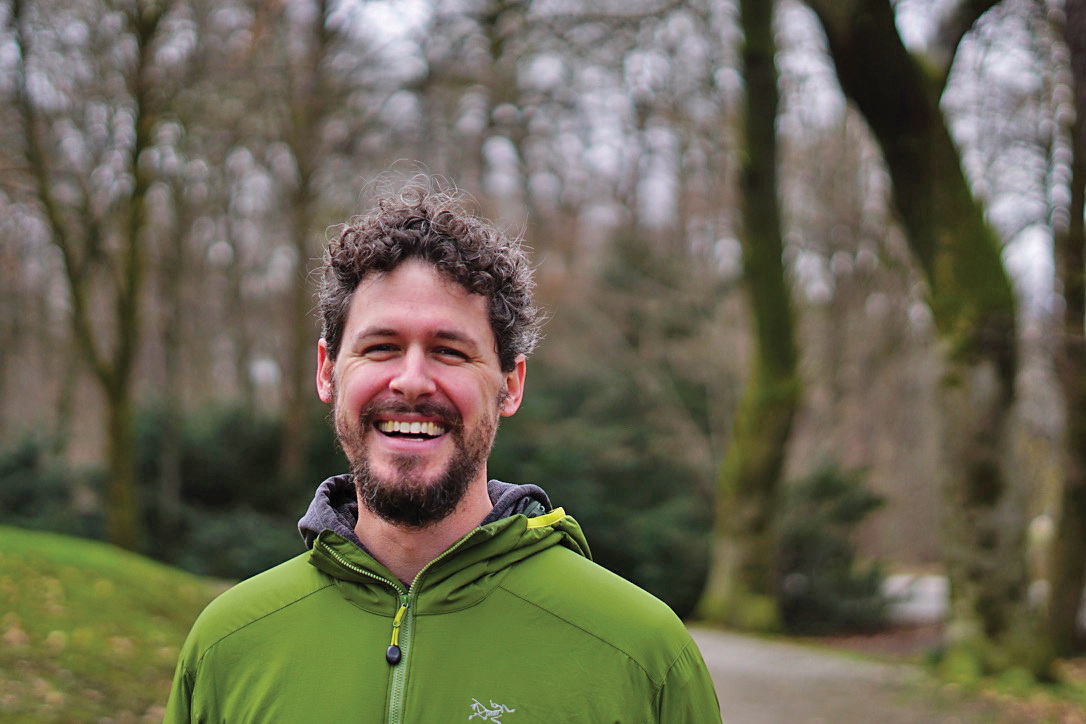
Tackling the scourge of over-complex plugin design whilst retaining the ability to mould your track to perfection, Musik Hack’s Master Plan is a most impressive addition to our mastering toolkit.
We spoke to co-founder Sam Fischmann about Master Plan and his personal concerns regarding oversampling…
Can you give us a bit of background on how Musik Hack first got off the ground, what motivated you to start this company?
“What motivated me to start was a really long journey. I was a composer studying academically when I fell really heavily into computer music. So much so that it really got me into trouble with the program I was in, because they were like ‘you have to notate something to pass’.

“I graduated and couldn’t figure out how to make a career out of music, but programming was something I learned how to do in order to make money. I wasn’t really happy making tools that didn’t align with my interests, so when Covid hit I hunkered down and started learning more about programming music tools. It was a way of marrying two separate parts of my brain – music and programming – that I’d kept in separate rooms for a while.
“Musik Hack was a random, lucky occurrence. I’d been going to production camps and I’d met a bunch of producers and worked on a plugin with one producer which kind of fell off. I met up with Stan Greene who runs a studio here in L.A. He checked out the rough version of this plugin. He liked the sound of it. So, we just started meeting up and then the company started around that first product idea. The ‘K’ in Musik Hack came because ‘Music Hack’ was already taken, and the domain name was way too expensive!”
With Master Plan it seems like you’ve built an all-in-one mastering solution. What attributes does Master Plan bring to the table when compared to other mastering suites?
“There’s two philosophies I see most often when it comes to plugins. They’re not always like this, but a lot fall into these camps. There’s the ‘one-knob’ camp, so I would put something like God Particle or some of the AI mastering suites you’d use online into this bracket. You’ve got very little control, but if you like that sound then the one-knob plugin will get you there.
“The other philosophy seems to be to make an airplane cockpit or nuclear reactor control – really complex. That’s good for people who are dyed in the wool engineers. The mechanics of it are just as important to them I think as the actual result.
“Master Plan tries to find the middle ground. You don’t need to know too much technical detail to use it. That’s a hard balance.”
What elements are key to a solid master, would you say, and what are some of the main obstacles that self-producing artists who are starting to master should seek to avoid?
“I think overdoing it! I like to cook, and I see mastering as kind of like the salt. You’ve made all the decisions about ingredients and how you’re going to cook it. The salt brings everything out so the taste is enhanced, that’s what a good master should do. It shouldn’t trample the creative decisions that you love and that have already been made up to the point of the mix.
“That is what mastering engineers do, and that I think is why it’s seen as something of a dark art. It’s not necessarily that it’s super technical, it’s just that developing your mastering sense is hard. Restraint is difficult. We all want to try and throw every tool at everything, because tools are fun.
The whole point is that you want this track to shine in any scenario you throw it at; in a car, in a restaurant, or on a pair of high-end speakers in a fine-tuned room
“But with mastering it’s critical to use your ear almost more so. The whole point is that you want this track to shine in any scenario you throw it at; in a car, in a restaurant, or on a pair of high-end speakers in a fine-tuned room. If you do too much you’re going to cause things to happen where it falls apart in one of those situations.
“The most famous thing right now is loudness. I think more people need to realise that the key to loudness is to not do it at the expense of the other qualities of your track. When you’re reaching for one thing you stop paying attention to another, you over-optimise and then you have a big sagging problem somewhere else in the track.
“It’s kind of why the only metering [on Master Plan] is the numbers at the bottom of our interface and not a load of graphs and meters, because your ear will tell you what’s going wrong. Meters are good but they’re more for diagnosing problems once you hear them. I feel like when people use them to guide them to the decisions to get the sound they want it’s going to lead to trouble.”
You’ve been at the forefront of research into oversampling and aliasing. For those readers who might not be aware, can you give a brief summary of just what issues aliasing distortion can cause to your mix?
“With aliasing distortion the problems arise when the element that’s trying to keep track of how things sound in the real world can’t keep up – it’s too fast to be represented. All sound frequencies are just cycles of things happening, and it all starts to happen too fast for the sample rate, so it appears to slow back down again and then reverse. That’s essentially what aliasing is. If you have math that’s inside a computer that’s changing the signal in a non-linear way, that math will create harmonics in the signal. Those harmonics are going to be above whatever the original frequencies were.
“The harmonics created by this math are related to the frequencies in the signal, multiplied by x2, x3, x4 ad infinitum, and sooner or later they’ll bounce off the highest frequency your sample rate can represent – aka, the ‘Nyquist’ frequency. This then comes back as noise in the signal.
The thing is, it’s important to listen. You can get into trouble just throwing oversampling onto everything
“The most general way to solve it is with oversampling – it’s like if you have a bouncy ball and you’re throwing it up, but there’s a ceiling it could bounce off of. Oversampling raises the ceiling, that’s it. You’re raising the ceiling then throwing a low-pass filter on it, then the sound instead of bouncing back, is now just gone. That also explains why higher oversampling is better because you’re just getting that ceiling higher and higher. That ball will not bounce back!
“The thing is, it’s important to listen. You can get into trouble just throwing oversampling onto everything. The reality is that if you’re starting from a very low frequency, you really have to mess that signal up a lot for it to get up to the Nyquist frequency. Higher frequencies in your mix are already fairly quiet. How often do you have something at like 14,000 Hz? You’ve got to listen, and it usually becomes a problem if your chain is full of plugins and heavy distortion or saturation, that’s where you’ve got to listen.”
Do you think more plugin developers should be incorporating oversampling into their plugins, or does the overuse of it lead to more problems with the sonic fidelity of your mix?
“Oversampling takes up more processing power and can sometimes mess with your phasing, it can reduce your headroom. The problem is that every developer is going to pick a different toolkit to do this and make different decisions about what’s important.
“Oversampling in the context of Master Plan means we don’t have to care so much about latency, it’s a mastering plugin so it’s not generally an issue. With a synth or instrument you can’t have latency, so a different technique might be used to add oversampling. Those techniques have different trade-offs. Low-latency approaches will introduce phase changes: Oversampling means you have to throw a low-pass filters onto your signal, which affects the shape of the waveform.

“Think of a square wave going through a low-pass filter, you’ll start to get ripples in it. What you’ll get is that instead of a perfect square it’ll go up, ripple, settle on something then ripple back. Because of that you’ve essentially reduced your headroom. If you’re applying this at the very end of your chain and then you throw a limiter on it, it’s going to start over-reacting. These are real peaks. It has implications down the line for dynamics processing.
“Then there’s practical problems like plugin developers might not get the latency right. It varies from plugin to plugin but there’s a series of little pitfalls, though there are workarounds.”
How far are we from the point at which our processors are so fast that these kinds of compensatory issues become a thing of the past?
“I have a thought about how this could get better. If we had faster CPUs and people start working at higher sample rates because they’re able to. I think it’s hard to get people to understand it, because a lot of people can’t hear the problem. Having these high sample rates is a good thing because of that ceiling we talked about earlier. Not having to go up and down a bunch of times. Having one decision made about the low pass filters will give a lot more control. It stops a lot of these problems from being a worry.

“I say this, but there’s a great video from Dan Worrall out there, and he had the opposite conclusion to me. He said if you think you’ve got a regular signal at a very high sample rate, then you put it through some kind of math and now you’ve got a second harmonic on it. Essentially frequencies are twice as high, that’s somewhat of a problem but not a problem.
“If we put another non-linear process on that then our starting ground is now twice as high, so it’s much easier to reach this aliasing ceiling. You’ll have this cumulative effect of stacking plugins that are building a ladder up to the top. Dan’s solution was, instead of running at a higher sample rate, to use oversampling on each individual plugin. He proved that it was cleaner.
“But the best answer to that problem isn’t that we should be oversampling a million times, the answer is making it easy to stick a simple low-pass filter that prevents any build-up between plugins with non-linear math when working at high sample rates. If this was built into sequencers so it was just a simple button you hit to turn it on, this problem wouldn’t exist any more, and we could just work at a high sample rate and not worry about it. That’s my philosophy – it needs to be easy to do.
“One more problem – aliasing distortion is not the only kind of distortion that you have when you use non-linear math. There’s intermodulation distortion, and there’s nothing that oversampling can do about that. We need to be comparing how much noise gets added by this and comparing it to aliasing distortion. I don’t know how we fix that at this stage. In many cases we might not want to ‘fix’ intermodulation distortion at all, because it exists in the analog realm as well, and is part of the sound of analog gear. The rabbit hole never ends!”
So you’ve stated that one of your main goals is to make plugin design philosophy more straightforward for users, so they can get the best from the software without having to learn it intricately. Does that frustration come from your own experience with plugins, and do you think the complexity of plugin design might have led some to walk away thinking music production is too complicated?
“Different camps behave in different ways. I think some people see a complicated plugin and say ‘yeah, forget this’ – they think the ‘quality’ aspect of music is not for them and they need to focus on something else. Others might lose the spirit of what they’re doing, and decide that getting technical is what’s important. This is sad to me because the most universally great thing about music is that we use it to move other people. Both metaphorically and physically. I’m an extremely technical person, but I know that when you’re trying to create and share something, falling back on complexity is a crutch. It’s a marketing tactic sometimes, too: ‘Oh this person is such a god of complexity’. No, you’re just odd!
I want to make something that allows people to express themselves purely and not feel like they’re having to make compromises on their taste, their style and their art
“I’m saying this as a tech gobbler! I love complex things too! But I want to make something that allows people to express themselves purely and not feel like they’re having to make compromises on their taste, their style and their art. I get sad when people feel obstructed because of the depth of technical skills they feel they need.
“Instruments have an inherent playability, you pick up a guitar and you can feel your way around it. Your first experience is that you start playing with it and you feel like you know what it’s doing right off the bat, that’s what I want from any plugin myself, so that’s what I want to put into the plugins I make for other people.”
What’s next for Musik Hack?
“I have a few things I’m working on with Stan; they’re both racing each other in terms of hitting that feeling that I just talked about. We have more simplified mixing/mastering tools. I think we’ve found a good lane, and also there’s lots of crazy random research about some of the problems we’re trying to address so I get to read all these papers and learn the pros and cons.







